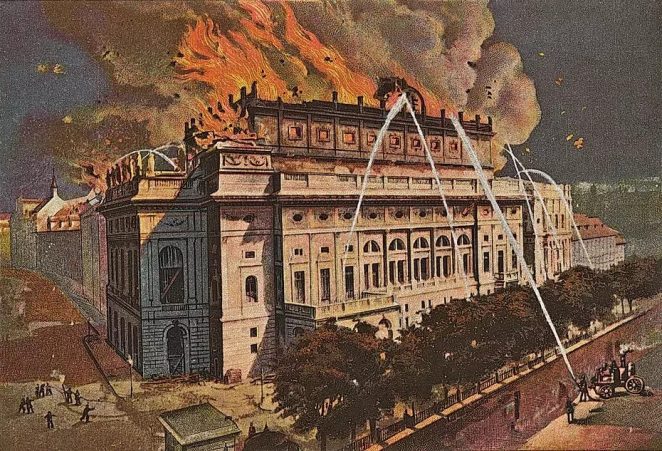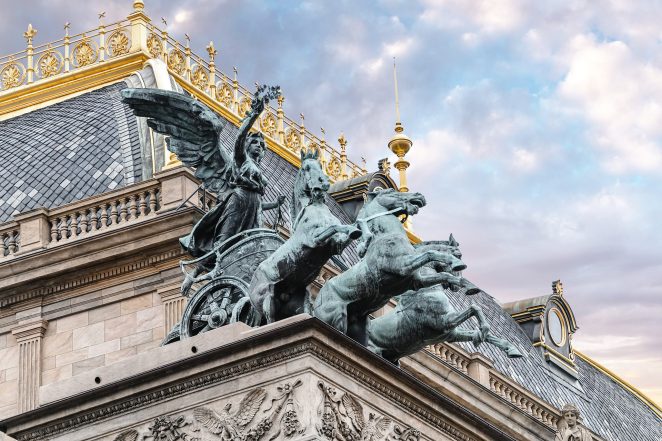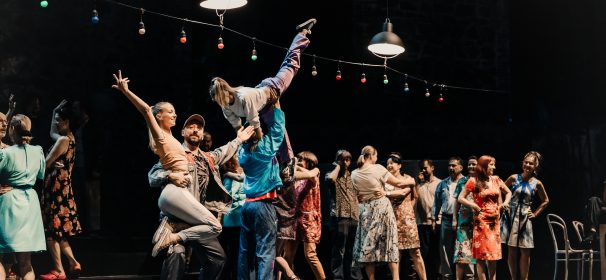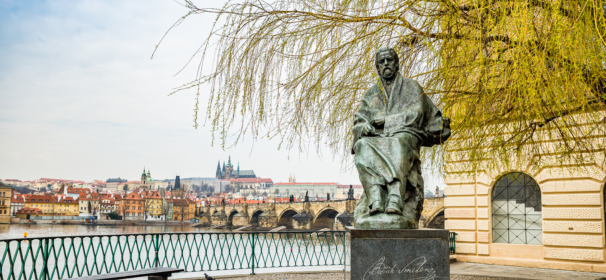Opera from the 17th century
The history of the Prague National Theatre goes back to the 17th century, more precisely to the coronation of Ferdinand III of the Habsburgs in 1627, when he became King of Bohemia. The event was celebrated with an opera performance, which was in the style of an Italian pastoral comedy. Opera became a fashion phenomenon. Enthusiastic about it, the aristocracy built theater halls in their mansions and invited opera troupes to perform. The coronation guests of the Holy Roman Empire were again entertained with opera in 1725, when Emperor Charles VI became King of Bohemia.
Prague’s first house intended for opera performances was completed in 1739. Its repertoire included Christoph Willibald Gluck’s operas Ezio and Ipermestra (Hypermnestra). The performance language of the operas was German or Italian. In January 1787, Mozart’s The Marriage of Figaro was performed for the Prague audience, conducted by the composer himself. In Vienna, the work was not successful, but in Prague the reception was enthusiastic and a sequel followed. Both Don Giovanni in 1787 and La clemenza di Tito in 1791 premiered in Prague. The premieres of Antonín Dvořák’s Rusalka (1901), Leoš Janáček’s The Adventures of Mr. Brouček (1920) and Bohuslav Martinů’s Juliette (1938) have also been significant.
The main stage of the Prague Opera changed its name according to its current owner. With the deals made in 1799, the name was established as the Estates Theater, which was managed by the composer Carl Maria von Weber between 1813 and 1816. The young Gustav Mahler visited the house in 1885 and 1886 to gain experience as a conductor.

Like the mythical Phoenix
The national awakening that started at the end of the century led to the birth of a new theater building. The stage was needed to strengthen the position of the Czech language and the sense of nationalism. The National Theatre has stood on the right bank of the Vltava river in the centre of the Czech capital for more than 140 years. Construction work began in 1868 and was completed 13 years later. Tragically, however, almost the entire building was reduced to ashes just two months after its grand opening. It was literally a national tragedy at the time! However, it’s only a slight exaggeration to say that the National Theatre was still burning, and people were already organizing a whip-round to pay for its full reconstruction. Their efforts raised almost immediately such a large sum that renovation work could begin straight away and the theatre opened just two years later, on 18th November 1883.
Did you know?
It was the nationwide fundraiser for the National Theatre that saw the informal greeting “nazdar” become part of the Czech language. The money boxes used to collect contributions towards the restoration of the theatre were marked with the words: Na zdar Národního divadla (For the success of the National Theatre). People then started to say hello to one another using the shorter version, “nazdar”; the greeting caught on and is still used today, as a familiar way of saying “hi”.
The crossroads of Czech and world culture
And what better way to open the National Theatre than with a newly composed opera? The task was taken up by Bedřich Smetana, one of the greatest Czech composers. To mark this occasion he composed his opera Libuše, which would later inspire the creator of the Czech presidential fanfare. The National Theatre is a crossroads of genres and cultures. Its repertoire includes works by leading Czech figures, such as Antonín Dvořák and Leoš Janáček, as well as pieces by renowned composers from around the world.
Today, the National Theatre is formed by several companies based in various buildings in the centre of Prague. The National Theatre stages can be found in the historical building of the National Theatre on the embankment near the Charles Bridge, The New Stage, adjacent to the historical building, in the Prague Estates Theatre, in the Kolowrat Theatre, and in the building of the State Opera near St. Wenceslas Square.

Tours of the historical building
The Prague Information Service provides weekend tours of the buildings of the National Theatre during the summer tourist season. The tour will take you to the foundation stones, on the stage and to the main foyer where you can admire the works of leading Czech artists of the end of the 19th century, when the building was built. Read more here.
The Prague National Theatre brings the light and comedic opera The Bartered Bride to Savonlinna Opera Festival, as well as The Grand Opera Concert, featuring the soprano legend Karita Mattila as one of the soloists.




